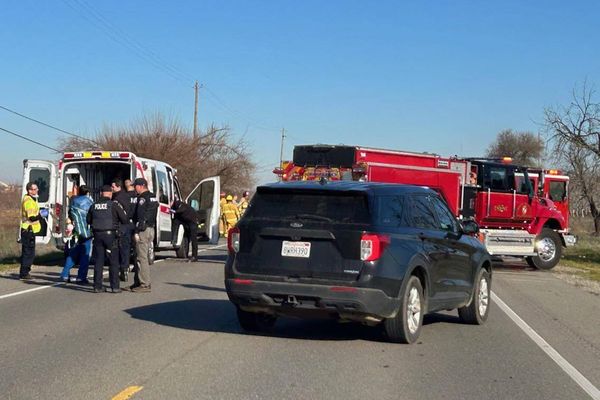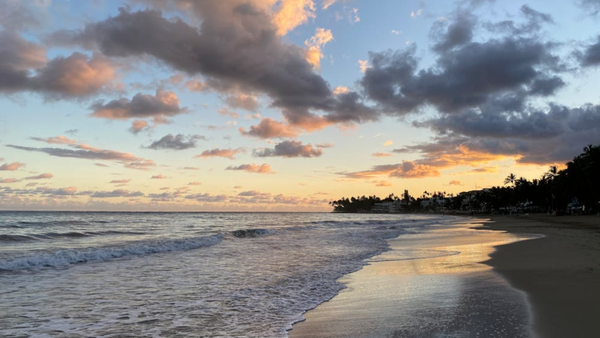
The New South Wales treasurer, Daniel Mookhey, dubbed his second budget since Labor took government 15 months ago as “a responsible [one] in difficult economic times”.
Others will make that call, including credit raters Moody’s and Fitch, which have maintained the state’s triple-A assessment despite Australia’s most populous state forecasting deficits – albeit shrinking ones – out to 2027-28 and possibly beyond.
The state, home to a third of Australia’s economy, has been slugged by interest rates reaching 12-year highs. Median homes in Sydney cost $1.15m in May, or almost 50% more than Melbourne’s, with mortgage loads of similarly outsized burden.
Mookhey declared he was “not spending callously” in a way that might encourage the Reserve Bank to leave borrowing rates high (or lift them).
The Coalition’s final budget, for 2022-23, proposed spending an extra $25bn over four years in a failed pre-election splurge. Counterparts in Queensland and Western Australia – where Labor governments both face polling days within 12 months – hope for more grateful electorates.
Mookhey’s restraint, such as it is, might be time-limited. The government does not have to worry about re-election until its 2026-27 budget.
Still, the NSW budget boasts $8.7bn in extra spending to assist households “with growing cost-of-living pressures” that will be noted by the RBA.
The state’s deficits over the four years also tally about $10bn. The blame is an adverse carve-up of GST that “duds” NSW to the tune of $11.9bn out to 2027-28 compared with last year’s share, the treasurer keeps reminding all.
Mookhey, though, seemed resigned – if not nonchalant – that rating agencies would downgrade NSW, lifting borrowing costs in the process. (S&P Global ditched the state from its top rating in 2021.)
Interest charges are already forecast to rise 9.1% each year over the forward estimates, with the treasurer declining to say if that increase factored in any rating cuts.
Queensland, he told journalists on Tuesday, had had a lower debt rating than NSW since 2009 but had been able to borrow more cheaply.
That happy outcome, though, probably hinges much on the brave move by the Palaszczuk government to rake in billions of dollars in windfall royalties from the coal sector when global prices spiked.
NSW missed its chance to snag as much as $2bn a month (when the Nationals apparently objected to the Liberals copying the northern neighbour).
Higher royalties introduced by Mookhey in his first budget were forecast to bring NSW an extra $2.7bn over the four years to 2027 – a number bumped up by $500m in the current one. Helpful, but not a way to snap what could be a decade of deficits.
Coal costs aren’t small either. The cost of the commonwealth’s coal price cap will near $900m over the 18 months to the end of this June, with the costs shared between the federal and state governments, officials told Guardian Australia.
Origin Energy, which in May secured a risk-sharing scheme with the government to keep the giant Eraring power plant spinning for at least a couple more years, was likely the biggest beneficiary of that price cap, given its short-term contract gamble.
Budgets, of course, are only as good as their assumptions. For NSW, the fault lines may be whether Mookhey and the finance minister, Courtney Houssos, can restrain spending as they presently propose.
Average annual spending is projected to slow sharply from 5.1% a year in the nine years prior to Covid times to just 1.7%, the budget promises.
That forecast seems to be heroic, given the budget is predicting average annual employee expense (think wages, super and so on) will rise 3.2% over the four years. (Public employees have been offered a cumulative 10.5% rise over the next three years alone.)
Mookhey said total headcount in the public service would not change much over these years, with the wage increases funded by lopping a lot of executive bureaucrats.
For context, the budget assumes Sydney’s consumer prices will rise by average of 2.7% each year.
To make the task of discipline even tougher, the budget also forecasts NSW wages after inflation will increase 2.7% in the five years to 2027-28.
In their first reaction to the budget, Moody’s said NSW’s “weaker share” of the national GST pool amid sustained capital spending “will challenge debt affordability”.
It also noted that meeting the annual expenditure growth target “will be difficult to achieve because of persistent inflation pressures and the recent removal of the state’s wage increase cap”. Employee costs will average 43.7% of total operating expenditure over the four years.
For its part, S&P Global said the budget “should support the creditworthiness of the state”, which the agency rates as AA+. “Operating surpluses are likely to grow in subsequent years, albeit at a slower pace than previously budgeted.”
Before the March 2023 election, Labor pledged to cover higher public sector wages through increased productivity. Rating agencies and the RBA will be among those marking Mookhey’s handiwork.
• This article was amended on 18 June 2024. A previous version incorrectly reported the total cost of the coal price cap as $884m, with the federal government matching the contribution. The NSW government later clarified that sum covered both state and federal costs.







